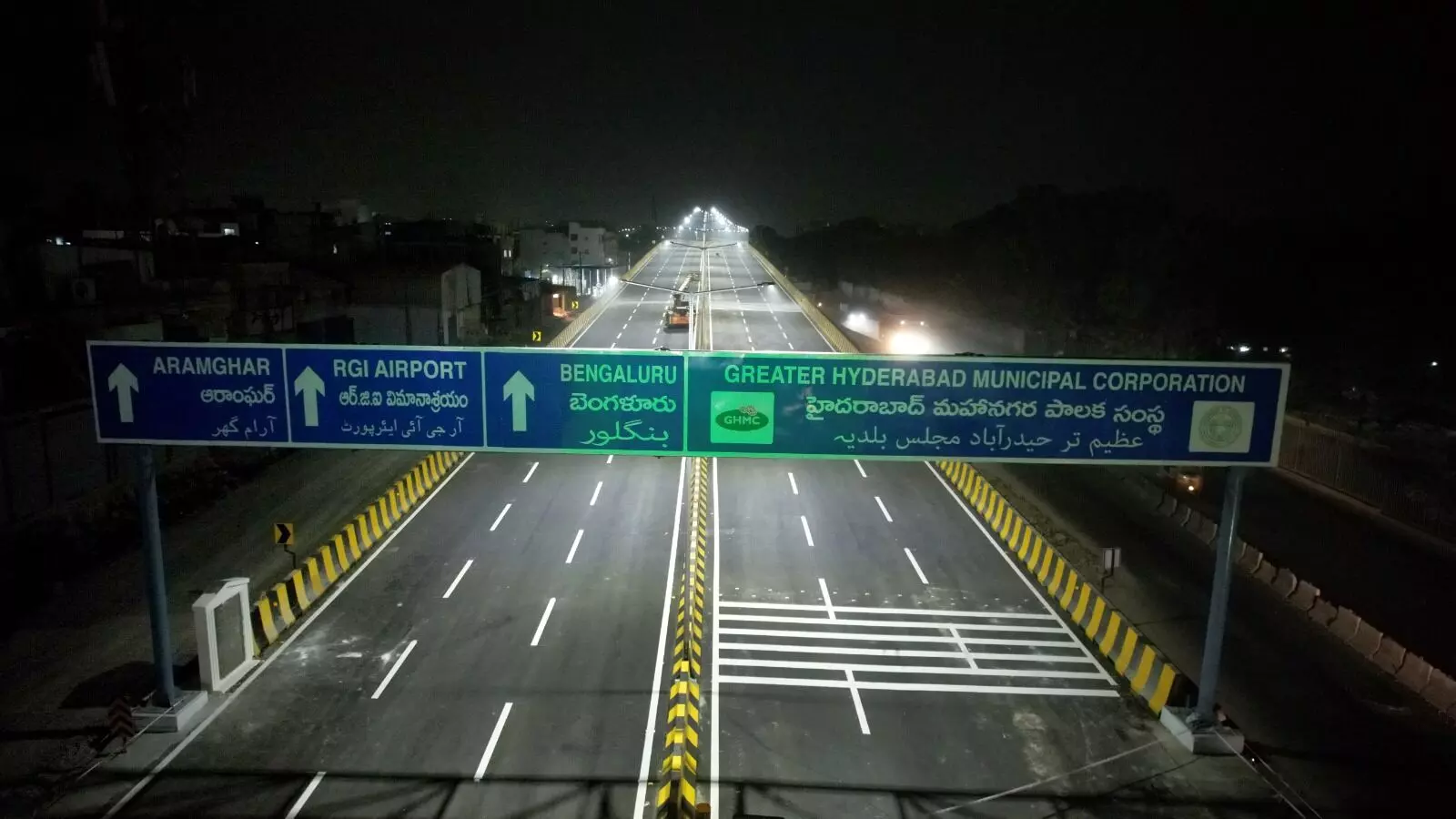Hyderabad's second-longest flyover from Aramgarh to Zoo Park to be opened today
The flyover will be inaugurated by Chief Minister A Revanth Reddy.
By Sri Lakshmi Muttevi
Hyderabad: The city’s second-longest flyover from Aramghar to Zoo Park flyover will be thrown open for the public on Monday at 4 pm.
The flyover will be inaugurated by Chief Minister A. Revanth Reddy.
Constructed for Rs 799.74 crore, the 4.04-kilometer flyover is expected to ease traffic congestion in several key areas of Hyderabad, including Aramghar, Shastripuram, Kalapathar, Darul Uloom, Shivrampally, and Hassannagar. The flyover was constructed at a cost of over Rs 799.74 crore.
Earlier, its inauguration was postponed twice. Greater Hyderabad Municipal Corporation (GHMC) wanted to get it inaugurated by Chief Minister.
The bi-directional six-lane flyover is the 23rd in the city and is the second longest after the PV Narasimha Rao Express flyover. This project is part of the Strategic Road Development Plan (SRDP), under which 36 out of 42 planned works have been completed.
Advantages:
1. It will reduce traffic congestion and save travel time.
2. Flyovers play a major role in streamlining the traffic control system. It helps to abbreviate waiting time at the intersection.
3. The effect of pollution can be reduced and it also decreases the risk of accidents.
4. It also contributes a lot to the aesthetic view of the city. Flyover avails to truncate traffic conflict points at the junction.
5. It will bring much-needed relief to commuters moving towards Aramgarh, Shastripuram, Kalapathar, Darul-Uloom, Sivarampally, Hasan Nagar Junctions, and RGI Airport as well via this flyover. People visiting the Nehru Zoological Park will also benefit from the flyover.
6. Saving in travel time and hence savings in vehicle operation costs like fuel etc.
Technology Used:
1. The girders are Precast and post-tensioned. They were cast in the casting yard, transported to the site on long trailers, and erected with the help of cranes.
2. The pier caps were cast on-site and positioned on the pier with stitched concrete. The other structure elements like crash barriers, friction slabs, etc., were precast and positioned on-site with stitched concrete.
3. Work at the site was confined to erection activities only.
By adopting this technology.
1. A significant amount of time was saved.
2.. Reduced the risk of accidents by mechanization to a large extent and considerable reduction in manpower.
3. Inconvenience to the traffic was significantly reduced.